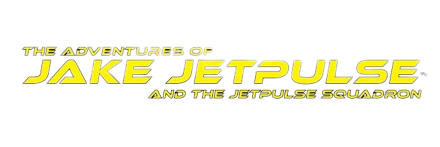Early Intervention Observation Worksheet
Download the Worksheet
🧩 Download the Free Early Intervention Observation Worksheet
A parent-created checklist to help you track your child’s communication, routines, and strengths. Share these notes with your pediatrician or therapist to support early evaluation and intervention.
📄 Download Worksheet (PDF)*This resource is not a diagnostic tool. It’s a free parent guide from Jetpulse Studios to support autism awareness and early learning.*
7 Signs I Didn’t Notice Before My Son’s Autism Diagnosis
7 Signs I Didn’t Notice Before My Son’s Autism Diagnosis
By Led Bradshaw — Jetpulse Studios / The Super-Dad Mindset
When my son Jake was three and a half years old, he was diagnosed with autism.
Looking back, I realized there were signs I didn’t recognize — not because I wasn’t paying attention, but because I didn’t yet understand what I was seeing.
If you’re a parent who’s starting to notice differences in how your child communicates, plays, or connects, I want you to know something: you’re not alone.
This post is here to help you recognize some of those early indicators — the same ones I missed — and to remind you that awareness isn’t about panic. It’s about empowerment.
1. Not Responding to Their Name
One of the earliest signs I noticed was that Jake often didn’t respond when I called his name.
At first, I thought he was ignoring me or simply focused on what he was doing. But what I learned later is that many children on the autism spectrum process sound and attention differently.
If your child doesn’t respond consistently, write it down — note when it happens and what’s going on around them. Sometimes that information can help your pediatrician identify patterns during evaluation.
2. Limited Eye Contact
People told me, “He’s just shy.” But it wasn’t shyness — it was discomfort.
Children with autism often find direct eye contact overwhelming. Once I stopped trying to force it and instead met Jake where he was comfortable, our communication improved.
It’s important to observe how your child connects, not just whether they do.
3. Very Self-Directed Play
Jake loved doing things his own way. He would line up toys, repeat routines, and build elaborate superhero stories. I thought that meant independence — and in many ways, it did — but it also showed that he was using structure to make sense of his world.
For some children, consistent order equals emotional safety.
4. Trouble with Transitions and Routine Changes
Every time I dropped Jake off at school, he would cry — every single morning. I thought it was separation anxiety, but in reality, I was disrupting a routine that gave him comfort.
Now I understand that predictable routines are essential for many children on the spectrum. If transitions are hard for your child, preparation and consistency can make a world of difference.
5. Repetitive Speech or Echolalia
Jake often repeated lines from his favorite shows — over and over. It wasn’t random.
He was processing language through repetition, something called echolalia, which is common in autistic children.
Instead of stopping him, I began to listen. Those repeated phrases were his way of communicating feelings and excitement.
6. Preferring Alone Time
While other kids played together, Jake preferred to play beside them or completely on his own.
This didn’t mean he didn’t like people — it just meant that social interaction took more energy for him than it did for other kids. Over time, I learned that connection doesn’t always look like conversation. Sometimes, it’s just being present.
7. Hyper-Focus on a Special Interest
For Jake, that special interest was superheroes.
What started as a small obsession eventually became a learning tool — and the foundation of The Adventures of Jake Jetpulse.
When your child loves something deeply, follow that lead. Their passion might become their way of connecting to the world.
What I Learned as a Dad
I used to think being a good parent meant fixing problems. Now I know it means understanding your child’s language — even when it looks different.
If some of these signs sound familiar, don’t panic.
Start keeping notes. Talk to your pediatrician or developmental specialist. Early intervention doesn’t mean rushing into labels — it means gathering information so your child gets the support they deserve.
Free Download: Early Intervention Observation Worksheet
To help you get started, I’ve created a free printable worksheet you can download below.
It’s the same type of observation tool I used when Jake was first being evaluated.
Why this matters:
Any information you can gather about your child — what they like, what triggers stress, how they react to sound or change — helps doctors, therapists, and educators create the best plan for them.
It really does take a community to raise a child, and your notes are a powerful part of that community effort.
Download the Jetpulse Early Intervention Observation Worksheet (PDF)
A Final Thought
I’m not a doctor or clinician. I’m just a dad who wanted to help his son find his superpower.
And if you’re reading this, chances are you’re trying to do the same.
Remember:
Awareness is the first step.
Love is the foundation.
And the world needs more parents like you — the kind who pay attention, who ask questions, and who never stop believing in their child’s potential.
Unlock the Power of Autism with Autism Superhero Comic Books For Kids!
Have a question or need assistance? We're here to support you and your loved ones on your autism journey. Fill out the form below, and we'll get back to you as soon as possible.

